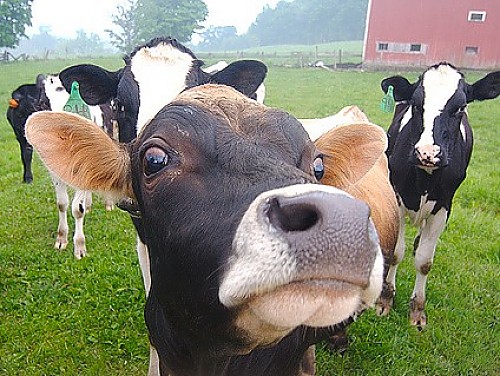When you think of food technology, do better sprinklers and electric tractors come to mind? Sustainable food technology also includes everything from the Internet of Things sensors that track produce shipments on the blockchain to lab-grown food like the steaks of Aleph Farms, writes The Impactivate.
According to Beef Magazine, the cow-calf relationship contributes the most methane to the typical cattle ranch operation. During the first sixth months of life, a calf depends on its mother for sustenance. The cow dines on roughage-intensive grasses and hay, causing it to experience excessive flatulence. However, the nutritional needs of its calf require this diet.

During other times of the animal’s life, it can dine on the typical feedlot diet of grains and corn, which do not interact with its gut bacteria in the same way as grasses. A diet of corn and grains doesn’t produce much methane.
That means that until now, if we wanted to eat steak, as a society we needed cattle ranches. The ability to create lab-grown meats though ends that dependency. We can enjoy a nice, juicy lab-grown Porterhouse steak that involves no ranching, no breeding herds, and no wasted land, desperately needed for housing construction.
Lab-grown food provides a slaughterhouse-free method of growing delicious, nutritious food. These purveyors of sustainable food technology use natural, non-GMO cells and no antibiotics to grow the steaks without the cows.
This lets even the most over-crowded areas sustainably grow protein-rich meats without livestock. Finally, areas immersed in frequent droughts can produce the needed sustenance to provide their population with the needed nutrition.
Since the same government requirements apply to all food in each nation, the lab-grown food must meet the same high-quality standards. In Singapore, the first lab-grown chicken reached consumers in December of 2020. Referred to there as cultured meat, the restaurant industry adopted it first.

Cultured meat provides the happy medium between butchered meats and vegetarian or vegan meat alternatives crafted from plants. Die-hard steak buffs tend to shy away from plant-based meats, perhaps leftovers from middle school soy burgers in the cafeteria. Lab-grown meat provides the look, taste, and texture of farm-raised meats. Cultured steaks even exhibit the same shape as the naturally farm-raised meats. It starts with the cells of high-quality, healthy cows and grows them in a sterile, safe environment.
This process doesn’t just help those on earth, but the international community living on the space station. Developing these methods now ensures we have the ability to produce viable crops when we someday terraform Mars. Large-scale farms on a space station, don’t prove feasible, but dedicating a lab to food production confines the process to a small enough space. The process also encapsulates a process that normally requires two to three years into three to four weeks.
Sustainable food technology can take food production out of grassy fields and put it into sterile labs that produce tasty, disease-free food. Lab-created steaks, for example, eradicate the possibility of mad cow disease passing to humans. Without the need for overcrowded feedlots, coccidiosis in cows also disappears. We’re not long from reaping the benefits of sustainable food production in a lab environment.


